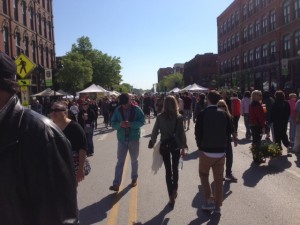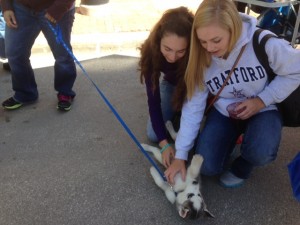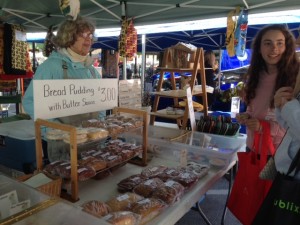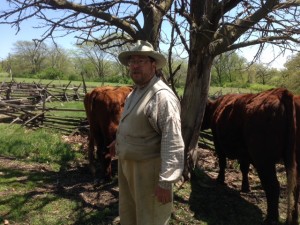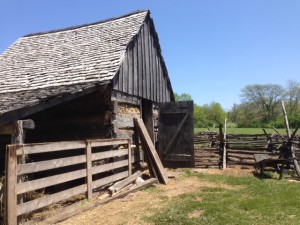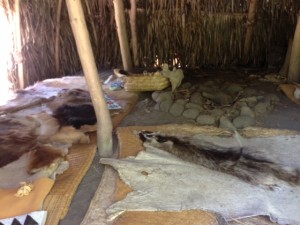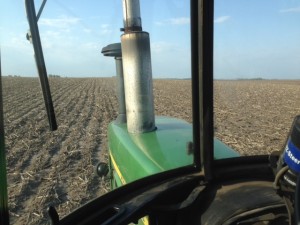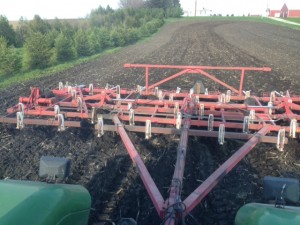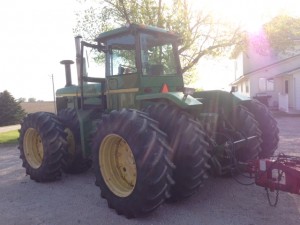Today presented the broad gamut of agriculture from before the seed hits the ground to the finished products at the super market. Plus, we got to see an engaged representation of the development of farming in Iowa.
We started off the day by leaving a little earlier for the Des Moines Farmers Market. It was absolutely huge! There were at least one hundred vendors, selling food, crafts, flowers, produce, and anything in between. It was almost overwhelming! I literally didn’t know where to start. Then again, I’ll admit that I’ve hardly gone to the farmers market to shop. Instead, I’ve usually gone simply to have a good lunch, but if something catches my eye, then I may buy it and save it to use in a later meal.
Before we left to go spend Dr. HN’s money (meaning our tuition), he tasked us with thinking about the role of farmers markets in representing, filling, and expanding the market for local and/or organic foods and also whether the poor and those on food stamps have adequate opportunity to participate in this market. First, I believe these markets can be productive in getting people excited about local foods. If some of the products weren’t local, the sellers definitely were. For the most part, the vendors seemed happy to talk about the food, only as long as there wasn’t a line behind you and if you ask a question with specifics. Nonetheless, for those living in and around Des Moines, the market gives them a chance to taste the freshest food and put a name and face to the producer. However, the vast majority of the attendees were white and middle class and up (and apparently dog lovers). It got me thinking that although the opportunity is technically there for all people to participate, the poor may be going through a different experience. First, the prices are more expensive for goods that do not keep as long, and farmers markets sell ingredients for the same price as some supermarket-bought prepared dinners. Buying at supermarkets would still save time and money when shopping and preparing meals. Second, farmers markets don’t offer the same ease as supermarkets in comparing prices. One would have track down all the relevant stalls across a couple blocks, compare prices, then go back. Apparently, the new Farm Bill allows food stamps to be used at farmers markets, so it may provide a good incentive for the poor to go. However, I’m still wary that doing so would not be the most economical decision.
After spending some hours at the farmers market, we then traveled to Living History Farms, an “interactive outdoor museum” that educates people on the true historical “Midwestern rural life experience.” There were several stops that exhibited rural life on a 1700 Ioway Indian farm, 1850 pioneer farm, 1900 horse-powered farm, and a replica of the town of Walnut Hill in 1875, and each had period actors that told about life during that time. I thought it was a very enlightening experience, and the actors were very educational. However, I only wished that there were more people that were actually going through some of the motions of farming.
I ended the day by finally getting on a tractor! Once we saw how nice a day it was, Dr. HN observed that all the farmers would now be rushing to plant their seeds for the season. Therefore, almost every minute not talking to us, he spent talking to farm neighbors who could possibly let us tag along during the planting. We were in luck! Brent Friest was planting, while Denny and his son, Scott, were cultivating Denny’s mother-in-law’s land. For those not familiar with the farm lingo, cultivating essentially means plowing the land to rip up weeds and loosen the dirt to get it ready for the seeds. It was awesome! We’ll be able to have a few more chances to interact with Denny and Brent and see more farming in the coming weeks.

